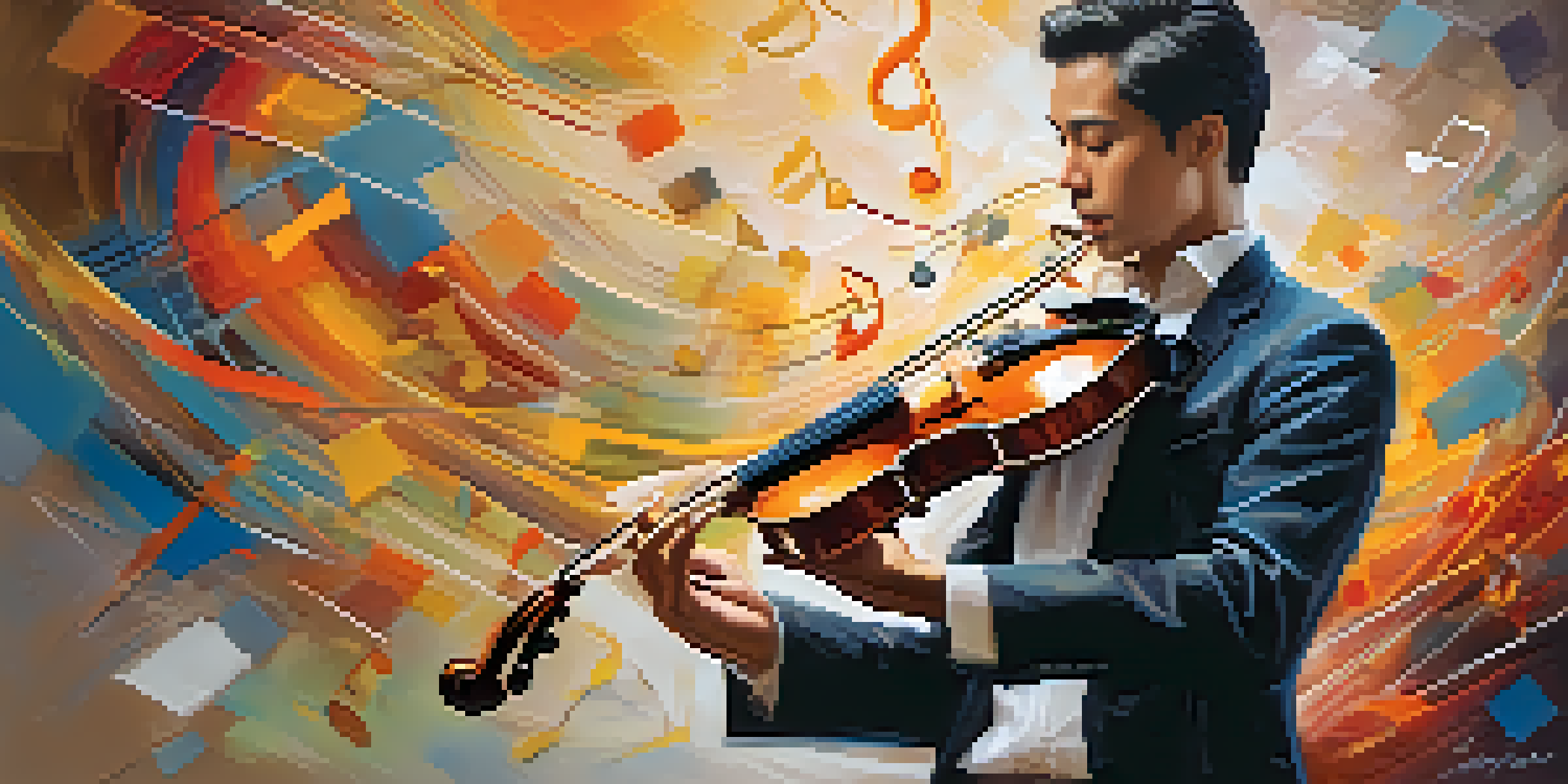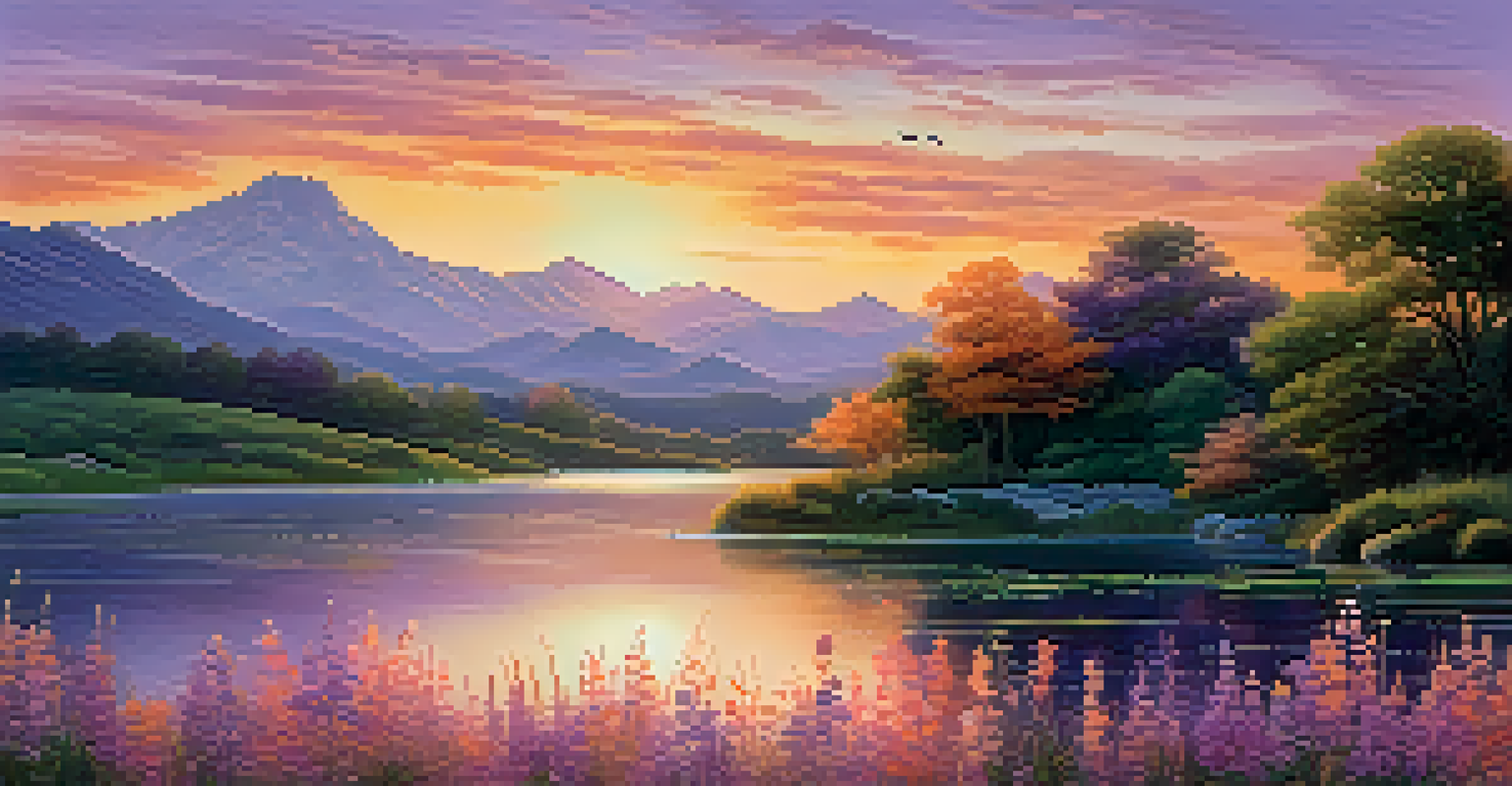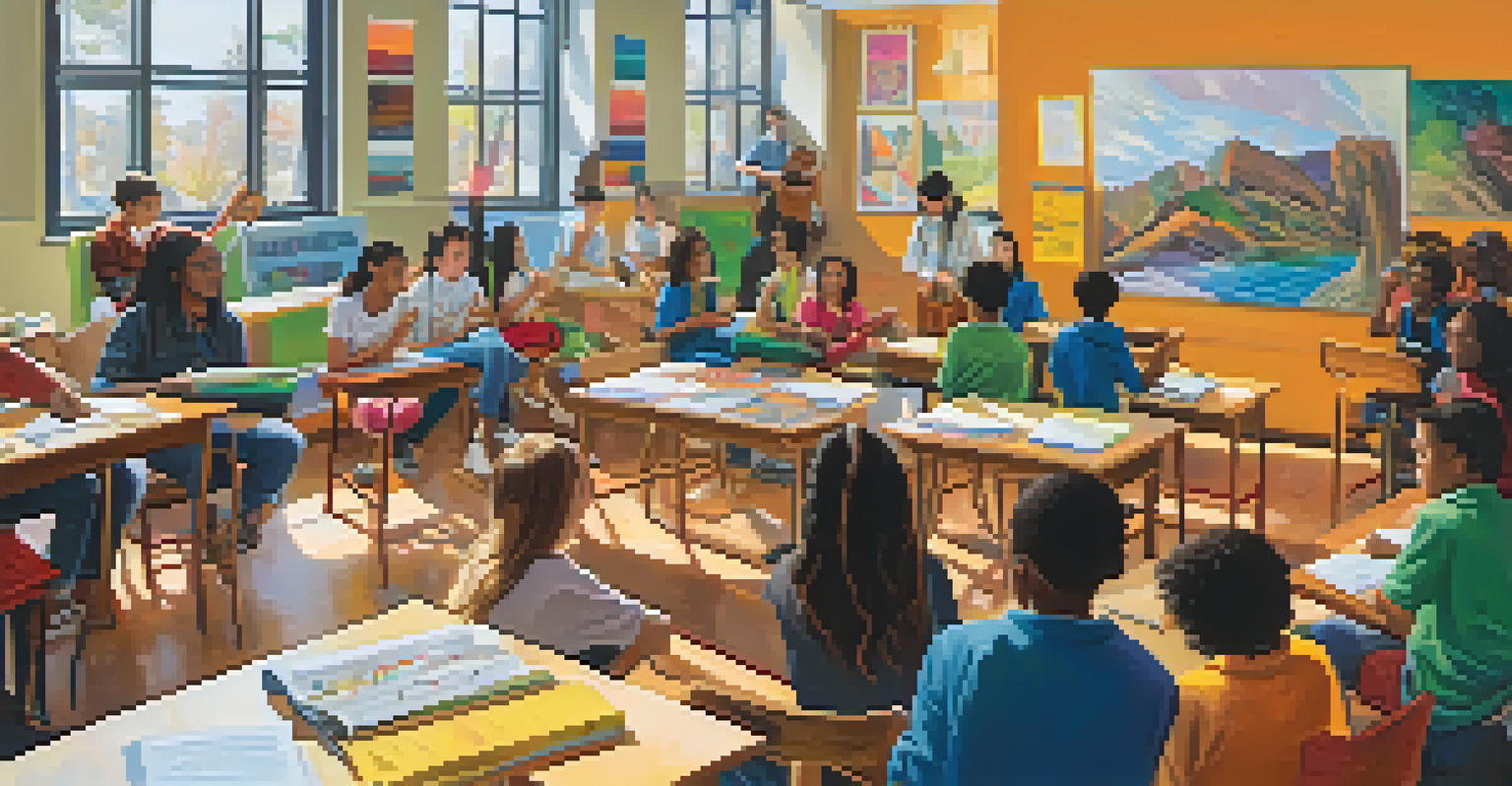The Intersection of Music, Art, and Literature Studies

Understanding the Interconnectivity of the Arts
Music, art, and literature are often viewed as distinct disciplines, yet they share a profound interconnectedness. Each form of expression reflects the cultural and emotional landscapes of its time, influencing and inspiring one another. For instance, many musicians draw upon literary themes for inspiration, while visual artists often create works that evoke musical rhythms. This synergy creates a rich tapestry of human experience that transcends individual mediums.
Art is the most beautiful of all lies.
Consider the famous composition 'Pictures at an Exhibition' by Modest Mussorgsky, which was inspired by Viktor Hartmann's paintings. Here, we see how visual art can ignite musical creativity, showcasing how one art form can breathe life into another. Similarly, many poets use musical techniques, such as rhythm and meter, to enhance the auditory experience of their written words. This blending of disciplines invites a deeper appreciation for the arts as a whole.
By studying these intersections, scholars and enthusiasts can uncover new meanings and insights that might be overlooked when each discipline is examined in isolation. This holistic approach enriches our understanding, enabling us to appreciate the shared emotions and ideas that resonate across music, art, and literature.
Historical Context: How Arts Have Evolved Together
Throughout history, music, art, and literature have evolved hand in hand, often reflecting the societal changes of their times. The Renaissance period, for instance, saw a blossoming of creativity across all three fields, with artists like Leonardo da Vinci and writers like Shakespeare influencing one another. This era was marked by a celebration of humanism and individuality, leading to groundbreaking works that still resonate today.

In the 19th century, the Romantic movement further highlighted the interplay of these disciplines, with artists and writers exploring themes of emotion and nature. Composers like Chopin and Liszt created music that mirrored the passion found in romantic poetry. This period illustrates how the arts often respond to similar cultural movements, creating a dialogue that enriches our understanding of human experience.
Interconnectedness of the Arts
Music, art, and literature influence one another, creating a rich tapestry of human experience that transcends individual mediums.
By studying the historical context of these art forms, we can appreciate how they shape and are shaped by the world around them. This awareness allows for a richer exploration of how art, music, and literature continue to influence one another in contemporary society.
The Role of Themes and Motifs Across Disciplines
Themes and motifs serve as the backbone of artistic expression across music, art, and literature. Common themes such as love, loss, and identity resonate deeply, often transcending the boundaries of individual mediums. For example, the theme of love can be found in countless songs, paintings, and poems, each offering a unique perspective on the same emotion.
The painter tries to master the relationship between the visual and the emotional; the composer the relationship between sound and emotion.
Take, for instance, the portrayal of tragic love in literature and its musical counterparts. Writers like Edgar Allan Poe have inspired composers to create haunting melodies that encapsulate the essence of his themes. This interplay illustrates how specific motifs can be reinterpreted and reimagined, leading to a richer understanding of the human condition.
By examining these recurring themes, we can see how they connect various art forms, allowing for a dialogue that enhances our appreciation for each discipline. This interconnectedness highlights the universality of human experiences, showing that despite different expressions, we often grapple with similar feelings and ideas.
Modern Interpretations: Fusion of Artistic Mediums
In today's world, the fusion of music, art, and literature is more prevalent than ever, creating innovative forms of expression. Artists frequently collaborate across disciplines, resulting in multimedia projects that blend visual art, music, and storytelling. This convergence not only captivates audiences but also challenges traditional definitions of each art form.
For example, a contemporary performance might incorporate live music, projections of visual art, and spoken word poetry, creating a powerful, immersive experience. These collaborative efforts often lead to new interpretations and insights, encouraging audiences to engage with the arts in fresh ways. This kind of artistic fusion reflects our increasingly interconnected world, where boundaries between disciplines blur.
Historical Evolution of Art Forms
Throughout history, music, art, and literature have evolved together, reflecting societal changes and cultural movements.
By embracing these modern interpretations, we can explore the limitless possibilities that arise from collaboration. This dynamic approach not only enriches the artistic landscape but also fosters a deeper connection among audiences, artists, and the stories they tell.
The Impact of Technology on Artistic Collaboration
Technology has revolutionized the way we create and experience art, music, and literature. Digital platforms allow artists to connect and collaborate like never before, breaking down geographical barriers. Musicians can now easily collaborate with visual artists or writers, creating a rich tapestry of interdisciplinary work that was once unimaginable.
For example, streaming platforms enable musicians to share their work alongside visual art, creating an immersive experience for audiences. Social media also plays a significant role, allowing artists to gain exposure and connect with fans, fostering a sense of community. This technological advancement has opened up endless possibilities for creativity and collaboration.
As we embrace these technological changes, we must also consider their impact on the future of the arts. By leveraging technology, artists can innovate and experiment in ways that challenge traditional norms, leading to exciting new forms of artistic expression. This ongoing evolution invites us to participate in a continuously unfolding dialogue between music, art, and literature.
Education: Integrating the Arts for Holistic Learning
Integrating music, art, and literature studies in education offers students a holistic learning experience. By exposing students to various forms of expression, they develop a deeper understanding of culture and creativity. This interdisciplinary approach fosters critical thinking and encourages students to draw connections between different art forms.
For instance, a lesson that explores a poem alongside a musical piece and a painting can enhance students' comprehension and appreciation of each medium. This kind of thematic exploration enables students to see how artists and writers respond to similar ideas, enriching their understanding of the creative process. Furthermore, it cultivates empathy and emotional intelligence as students engage with diverse perspectives.
Modern Artistic Fusion
Today, technology enables unprecedented collaboration across disciplines, resulting in innovative multimedia projects that engage audiences.
By advocating for such integrated learning experiences, we prepare future generations to appreciate the rich tapestry of human expression. This not only nurtures creativity but also equips students with the skills needed to navigate and contribute to an increasingly complex world.
Conclusion: Celebrating the Unity of Artistic Expression
The intersection of music, art, and literature studies highlights the beauty of creative collaboration and expression. By recognizing the interconnectedness of these disciplines, we can celebrate the rich tapestry of human experience that they collectively represent. Each art form, while unique, contributes to a greater understanding of our emotions, culture, and history.
As we explore these intersections, we open ourselves up to new interpretations and insights that enhance our appreciation for the arts. This ongoing dialogue between music, art, and literature invites us to engage with the creative works that shape our lives and societies. Ultimately, it reminds us of the power of artistic expression to transcend boundaries and unite us in shared experiences.

In a world that often emphasizes division, the unity of these art forms serves as a powerful reminder of our shared humanity. By celebrating these connections, we can foster a deeper appreciation for the diverse voices and stories that enrich our cultural landscape.